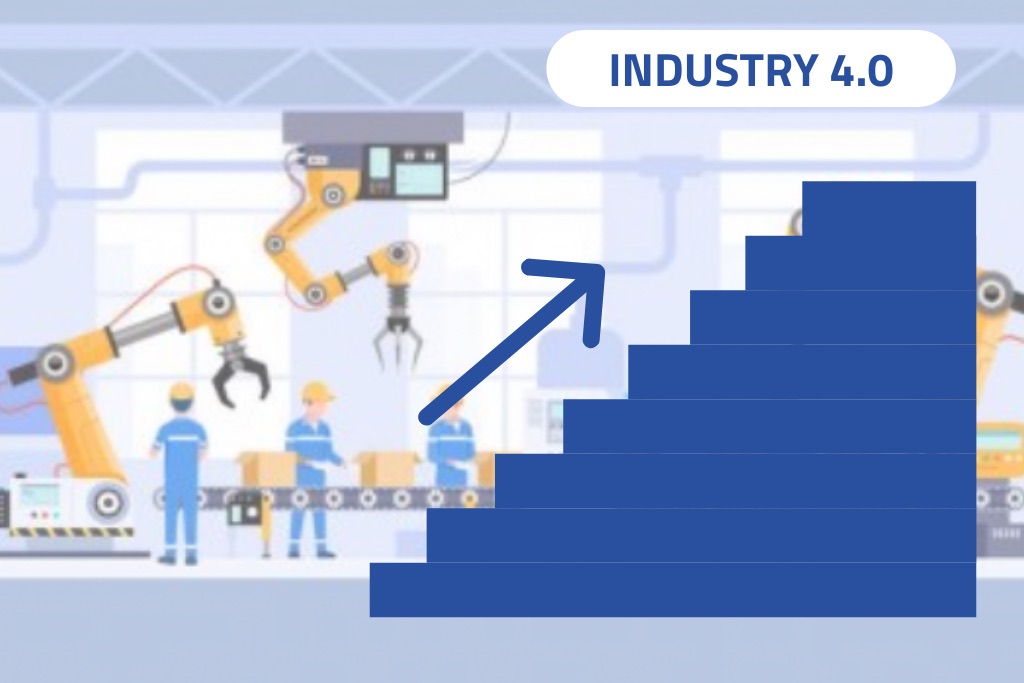8 steps for successful digitization in companies
In this article, we have summarized the 8 steps for successful digitization in companies from our project experiences.
Many companies are still struggling with the implementation of their digitization strategy in the company. Concrete implementation projects with measurable benefits often fail or do not achieve the targeted improvements.
Although the steps sound almost trivial, their conscious planning and consistent implementation are essential for project success.
Many potentials are still hidden in production and logistics processes. Effective solutions for digitalization on the shopfloor result from the use of industrial smartwatches. They ensure smooth cooperation between man and machine, as well as between employees, and thus increase the efficiency of the entire production.
The following steps are crucial for successful digitization in companies.

1. Define goals
At the beginning of the project, clear goals must be defined. It is important that all responsible employees are present and work out these together. Goals provide orientation, structure and pursue a higher purpose.
They are there to comply with certain changes in order to optimize processes. This is also the case with digitization in the company. When setting goals, the specific use case in the company should already be defined so that there can be no misunderstandings.
2. Involve departments
After the goals are clear, all departments that are necessary for this must be involved in the project. This way, all employees feel involved and possible employee dissatisfaction is avoided.
3. Perform test phase
As soon as this is also done, the first test phase, called pre-rollout, can be started. A small number of industrial smartwatches are made available to the company.
The employees can first get a haptic feel for working with the industrial smartwatches. In most cases, they will not give the smartwatch back. In addition to the hardware components, the interaction with the machines is set up and tested.
During the pre-rollout, the project managers have the opportunity to scrutinize the revolutionary system and assess the overall project.
4. Analysis and evaluation – adjustment of targets
After the test phase has been completed, the analysis and evaluation takes place in the company. Here, processes are examined again in detail and the measured KPIs (key performance indicators) are presented.
As soon as the facts are on the table, those responsible decide whether the rollout can take place. The most common measurable successes include an increase in employee productivity, a reduction in downtime and an increase in machine utilization.
5. Rollout
During the final rollout, all employees in the department to be digitized are equipped with industrial smartwatches and connected to the central systems. Under the supervision of the provider, such as aucobo GmbH, possible error messages are corrected and questions answered.
In the end, individual adjustments to the individual employee are also crucial for an ideal result of the project. Sufficient time should be planned for this in order to achieve future-proof results after complete implementation.
6. Change management in the company
Once the rollout has taken place and an important step towards digitization has been made, it is equally important to inform all other departments in the company about the progress. Marketing departments, for example, are often forgotten.
This means that important content is lost. Depending on the area of expertise and the size of the company, more in-depth information for other employees is also helpful. Perhaps the implementation of the new system is useful for other departments in the company.
It would be very annoying if other project managers do not have the chance to introduce such a groundbreaking innovation in their department as well. All these points should not be ignored in order to achieve holistic results in the company.
7. Communication to customers
In addition to internal communication, external communication, for example to customers, is very important. Customers gain a better insight into the company’s processes and see that it is also at the forefront of innovation.
When it comes to “playing in front”, competitiveness also becomes relevant. Nowadays, all companies strive for continuous improvement, and digitization is no longer a foreign concept.
8. Adapt and learn
Even though most companies would like to rest on their laurels after the project has been completed, the ongoing adaptation of new possibilities should not be ignored.
Only further adaptations and constant learning will achieve the desired demands in the long run. In today’s economy, those who stand still have usually already lost.
These 8 steps lead to successful digitization in companies. We would be pleased to accompany you on the way.
Stay competitive and learn in a free initial consultation how the aucobo system can revolutionize your production with the first steps.
Drive the first steps for digitization of production in your company!
Contact us now and receive comprehensive advice.

